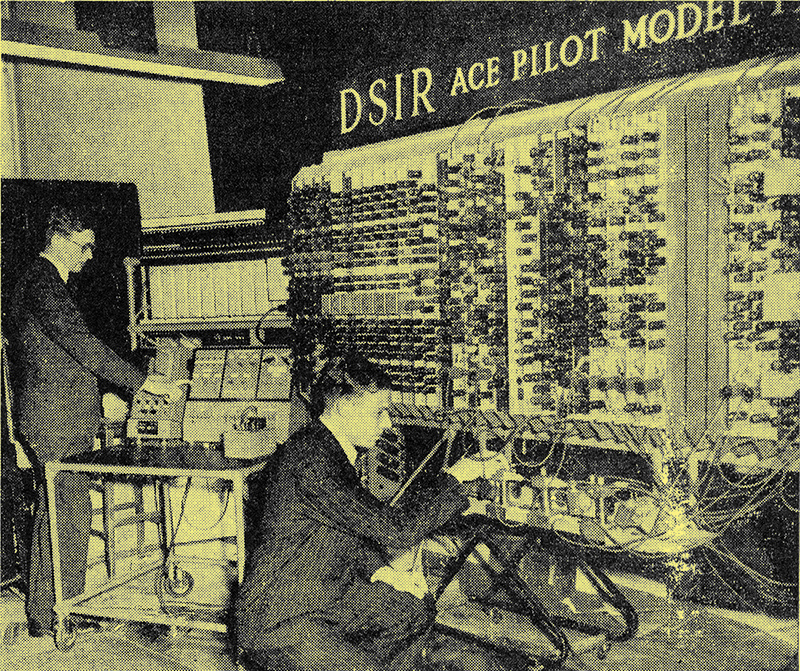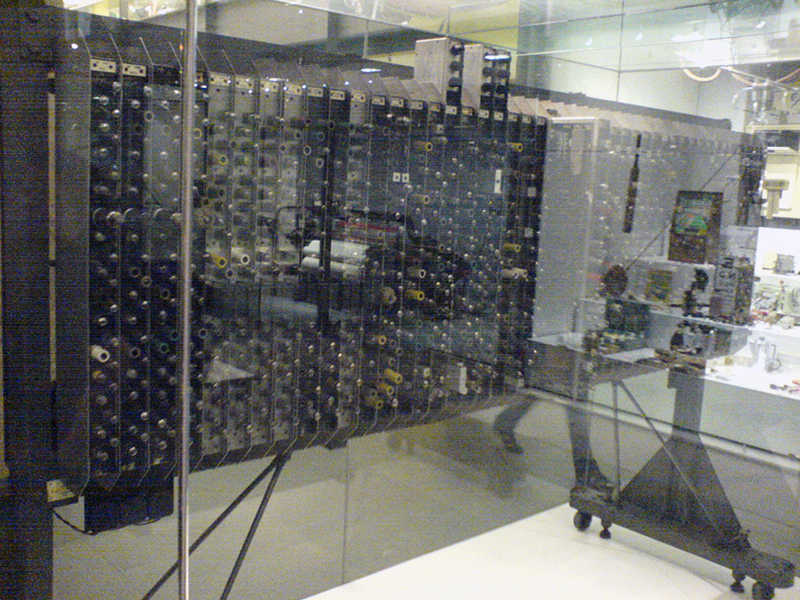|

This picture shows the Automatic Computing Engine designed and constructed at the National Physical Laboratory. Employing some 800 valves it will tackle any problem in arithmetic and carry out in a few minutes computations which take many months.
The above picture and caption was the only mention of this computer in the December 1950 issue of Wireless World.
The Pilot ACE was one of the earliest general-purpose, stored-program computers joining other UK designs like the Manchester Mark 1 and EDSAC of the same era. It was a preliminary version of the full ACE, which was designed by Alan Turing, who left NPL before the construction was completed.
The Pilot version of the ACE used 800 valves and clocked at 1 MHz. The memory used was mercury delay lines and the storage capacity was 128 32 bit words.
The Pilot ACE was built without hardware for multiplication or division, in contrast to other computers at that time. The ACE started out using fixed-point multiplication and division implemented as software. It soon became apparent that fixed-point arithmetic was a bad idea because the numbers quickly went out of range. It only took a short time to write new software so that the ACE could do floating-point arithmetic. After that, James Wilkinson became an expert and wrote a book on rounding errors in floating-point calculations, which eventually sold well.
In May 1955 the Pilot ACE was deemed to have completed its useful life and was presented to the Science Museum.

By Karl Baron from Lund, Sweden - Vacuum tube computer: Uploaded by shoulder-synth, CC BY 2.0, https://commons.wikimedia.org/w/index.php?curid=8828095.
|